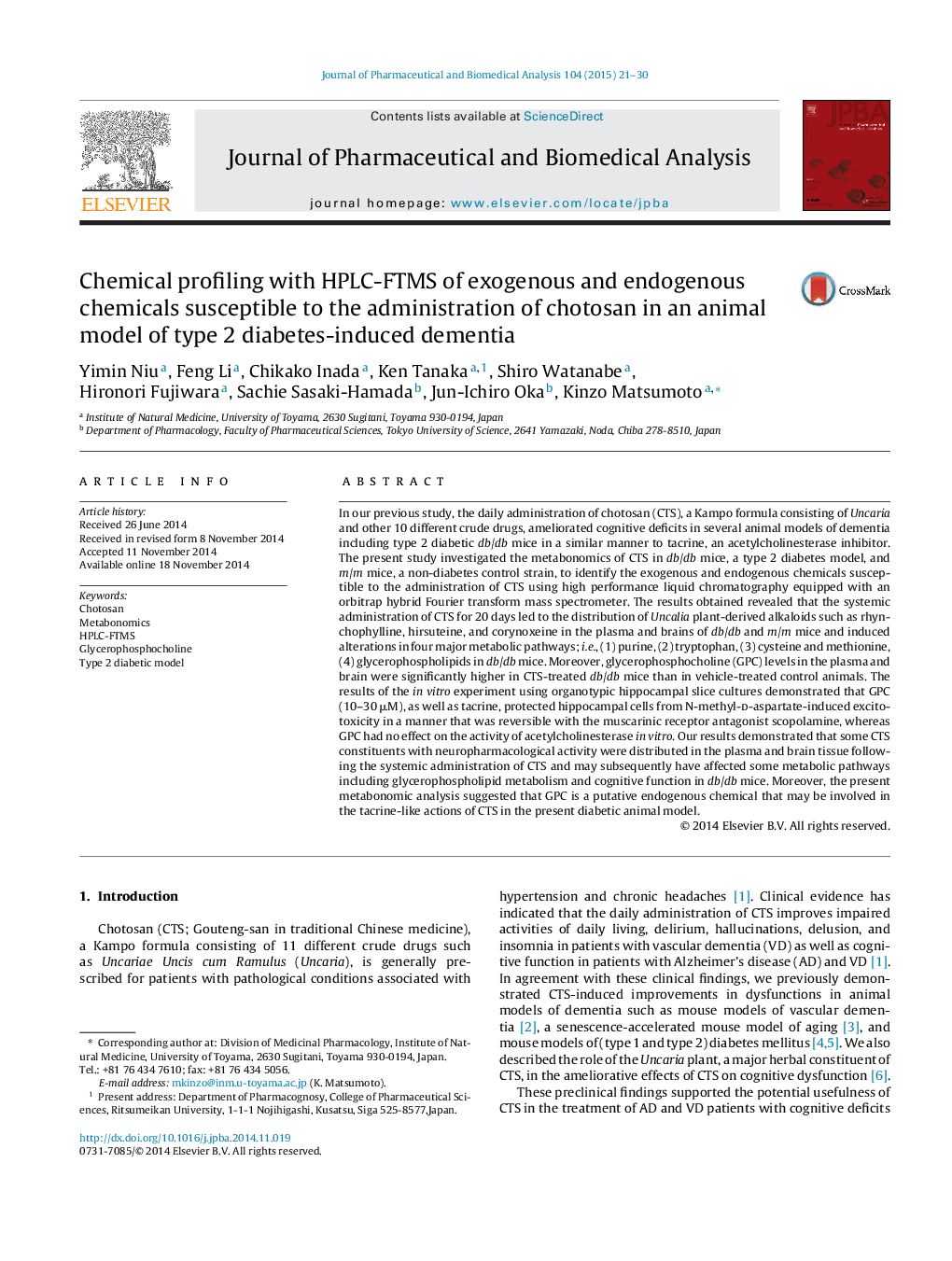| Article ID | Journal | Published Year | Pages | File Type |
|---|---|---|---|---|
| 1221197 | Journal of Pharmaceutical and Biomedical Analysis | 2015 | 10 Pages |
•Chotosan (CTS) reportedly has a tacrine-like antidementia effect in a diabetes model.•Plasma and brain samples of the model were analyzed by HPLC-FTMS after CTS treatment.•CTS components with neuropharmacological effects were identified in the brain.•CTS elevated the level of glycerophosphocholine that exerts a tacrine-like effect.•The chemicals identified may mediate the anti-dementia effect of CTS in the model.
In our previous study, the daily administration of chotosan (CTS), a Kampo formula consisting of Uncaria and other 10 different crude drugs, ameliorated cognitive deficits in several animal models of dementia including type 2 diabetic db/db mice in a similar manner to tacrine, an acetylcholinesterase inhibitor. The present study investigated the metabonomics of CTS in db/db mice, a type 2 diabetes model, and m/m mice, a non-diabetes control strain, to identify the exogenous and endogenous chemicals susceptible to the administration of CTS using high performance liquid chromatography equipped with an orbitrap hybrid Fourier transform mass spectrometer. The results obtained revealed that the systemic administration of CTS for 20 days led to the distribution of Uncalia plant-derived alkaloids such as rhynchophylline, hirsuteine, and corynoxeine in the plasma and brains of db/db and m/m mice and induced alterations in four major metabolic pathways; i.e., (1) purine, (2) tryptophan, (3) cysteine and methionine, (4) glycerophospholipids in db/db mice. Moreover, glycerophosphocholine (GPC) levels in the plasma and brain were significantly higher in CTS-treated db/db mice than in vehicle-treated control animals. The results of the in vitro experiment using organotypic hippocampal slice cultures demonstrated that GPC (10–30 μM), as well as tacrine, protected hippocampal cells from N-methyl-d-aspartate-induced excitotoxicity in a manner that was reversible with the muscarinic receptor antagonist scopolamine, whereas GPC had no effect on the activity of acetylcholinesterase in vitro. Our results demonstrated that some CTS constituents with neuropharmacological activity were distributed in the plasma and brain tissue following the systemic administration of CTS and may subsequently have affected some metabolic pathways including glycerophospholipid metabolism and cognitive function in db/db mice. Moreover, the present metabonomic analysis suggested that GPC is a putative endogenous chemical that may be involved in the tacrine-like actions of CTS in the present diabetic animal model.
Graphical abstractFigure optionsDownload full-size imageDownload as PowerPoint slide
